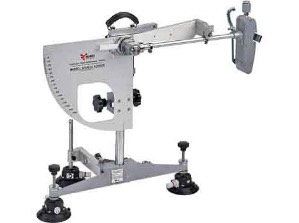In an era dominated by cutting-edge technology, where streaming services and podcasts reign supreme, the humble portable radio continues to carve out its niche as a timeless companion. With a rich history and an enduring presence, portable radios have evolved to adapt to changing times while maintaining their relevance. This article explores the journey of portable radios, from their inception to their continued significance in the digital age.
The Birth of Portable Radios: A Nostalgic Journey:
The concept of portable radios dates back to the early 20th century when inventors like Edwin Armstrong and Lee De Forest laid the groundwork for wireless communication. The first commercially available portable radio, the Regency TR-1, debuted in the 1950s, marking the beginning of a new era in personal audio entertainment. RadioRed devices were often bulky and limited in functionality, but they laid the foundation for today’s portable radios.
The Golden Age of Transistors: Compact and Convenient
The 1960s witnessed a revolution in portable radio technology with the advent of transistors. These tiny semiconductor devices replaced cumbersome vacuum tubes, making radios smaller, lighter, and more energy-efficient. The newfound portability and convenience sparked a surge in popularity, turning portable radios into must-have gadgets for music enthusiasts and news aficionados alike. The transistor era laid the groundwork for the sleek and compact designs that continue to characterize portable radios.
Adaptation to Changing Tides: AM to FM and Beyond
As technology progressed, portable radios evolved to offer a broader range of features. The shift from AM to FM frequencies improved sound quality, allowing users to enjoy clearer reception and a more diverse range of programming. In addition to traditional radio stations, portable radios began incorporating other functionalities, such as built-in clocks, alarms, and even cassette players. This adaptability ensured that portable radios remained versatile and attractive to consumers.
Surviving the Digital Onslaught: From Analog to Digital Tuning:
The digital revolution posed a significant challenge to traditional analog devices, and portable radios were no exception. However, instead of fading into obsolescence, these devices embraced digital tuning, offering users precise and reliable station selection. Digital displays and presets further enhanced user experience, allowing for effortless navigation through an expanding array of radio channels. The ability to connect to digital platforms through Bluetooth and auxiliary ports has allowed portable radios to integrate seamlessly into the modern digital landscape.
Beyond Audio: Emergency Preparedness and Communication:
In addition to their entertainment value, portable radios have proven invaluable tools in emergencies. Their reliance on battery power and often having built-in weather bands make them essential for staying informed during power outages and natural disasters. Portable radios become lifelines, providing critical updates and communication when other forms of technology may fail. This resilience adds an extra layer of significance to these compact devices.
The Aesthetic Appeal: Vintage Vibes and Modern Designs:
While functionality remains paramount, the aesthetic appeal of portable radios has played a crucial role in their enduring popularity. Retro designs reminiscent of classic models evoke nostalgia, attracting seasoned enthusiasts and a younger audience seeking a vintage aesthetic. Simultaneously, modern designs with sleek lines, vibrant displays, and touch controls appeal to those who prefer contemporary aesthetics. The marriage of form and function ensures that portable radios are functional devices and stylish accessories.
Future Prospects: IoT Integration and Smart Features:
As we navigate the 21st century, portable radios continue to evolve. Integration with the Internet of Things (IoT) is on the horizon, with intelligent features enhancing user experience. Voice command functionalities, Wi-Fi connectivity, and app integration are potential avenues for further development. The adaptability of portable radios to embrace new technologies ensures their continued relevance in an ever-changing landscape.
Conclusion:
With its rich history and adaptability, the portable radio has proven to be a resilient companion through the decades. From the early days of transistors to the current era of digital connectivity, portable radios have evolved without losing their charm. Whether serving as a nostalgic reminder of the past or a reliable tool in emergencies, these devices stand as a testament to the enduring appeal of a technology that has stood the test of time. As we progress, portable radios will likely continue to find innovative ways to stay relevant, bridging the gap between tradition and modernity.















